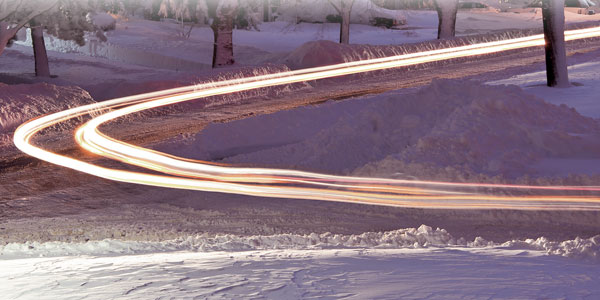 |
 Larry Kelly has been taking photos for many years. He refined his skills as an amateur photographer and went digital in 2006. A retired environmental law enforcement officer, he enjoys photography, writing, and coaching others. He can be contacted at lwkelly113@gmail.com. |
| Winter is here, a great time for beautiful photos. In fact, Bad Weather = Great Photos! You just have to take a few precautions to protect your gear. It’s vitally important to protect your camera and lens from condensation in cold weather. Never move from a warm house to the cold outside (or a cold outside to a warm house) without allowing for a gradual cooling, or warming, of your gear. Moisture can form on the outside, and the inside, of your camera and lens. This can potentially ruin the electronics in both cameras and lenses. Moisture can also fog your pictures and can take a very long time to clear. Prevent condensation by leaving your camera tightly zippered in its bag in your cold car for about an hour before you take it out to use. When coming inside, zipper the camera in its bag and leave it in the warm house for an hour before opening it up. When coming inside, remove the memory card from the camera before sealing it in the camera bag. You can then download the photos when you get inside without having to wait for the camera to warm up gradually. But seal the card inside its case too. Cold also reduces battery power. Keep your spare battery in an inside pocket when outdoors. Wait a minute before putting it in the camera so that it can cool too. If it is windy or snowing, be sure to have a filter and lens hood on your lens to prevent scratching. A Skylight, UV, Clear Glass, or even a Circular Polarizer filter costs a lot less to replace than a damaged lens. The Circular Polarizer filter also reduces glare off snow and gives you rich blue skies if it’s sunny out. It’s also advisable to have an inexpensive, disposable camera and lens cover on in these conditions. A two-pack can be bought for about $7.00. You can also easily make one yourself for free. Make sure you have a cover, filter, and hood on when shooting near salt water to protect from blowing sand and salt spray. It’s always a good practice to wipe down the camera and lens with a very lightly dampened, lint-free cloth after the camera has gradually warmed up at home. Use distilled, or deionized, water for this, not tap water. Be sure to exercise caution on ice and snow. Use extreme caution around any bodies of open or frozen water. It’s always a good idea to let someone know where you are going and when you will return. Protect your gear, stay safe, and enjoy this photographically beautiful season! |
|












 20 lucky winners will win $500 each in prizes totaling $10,000.
20 lucky winners will win $500 each in prizes totaling $10,000. 